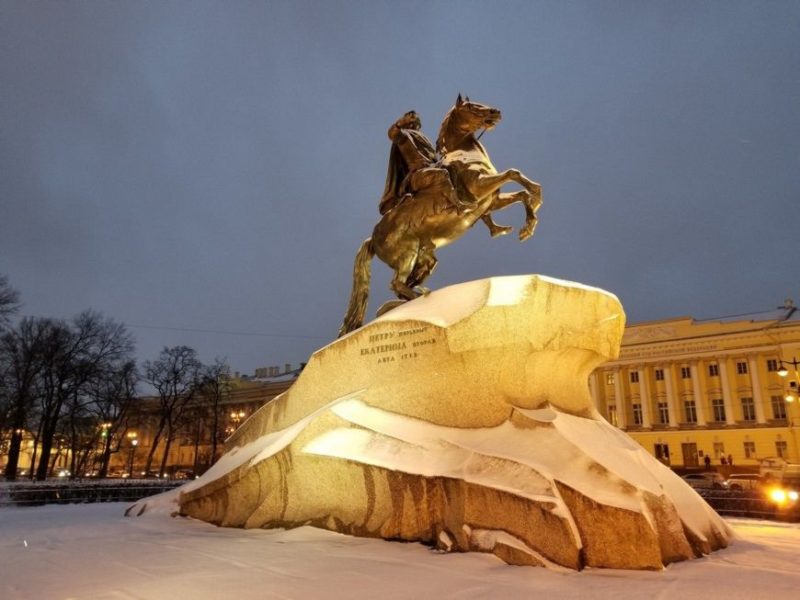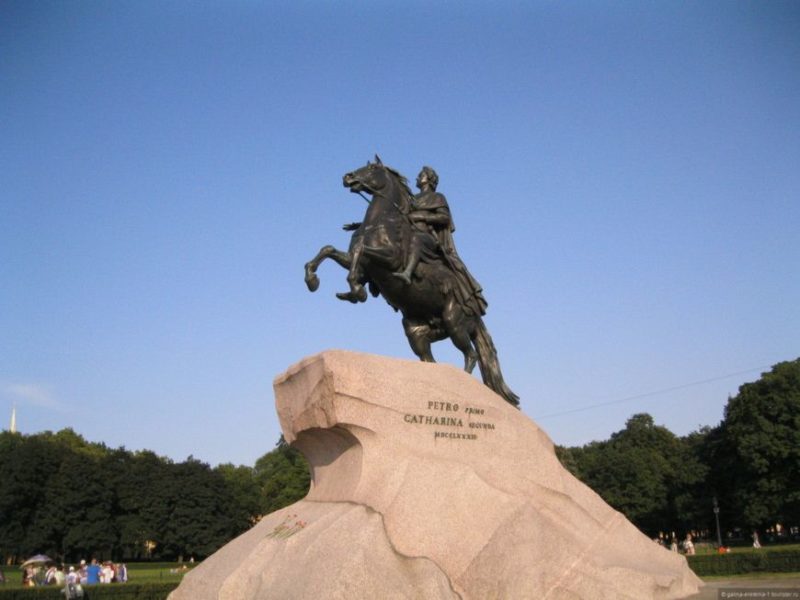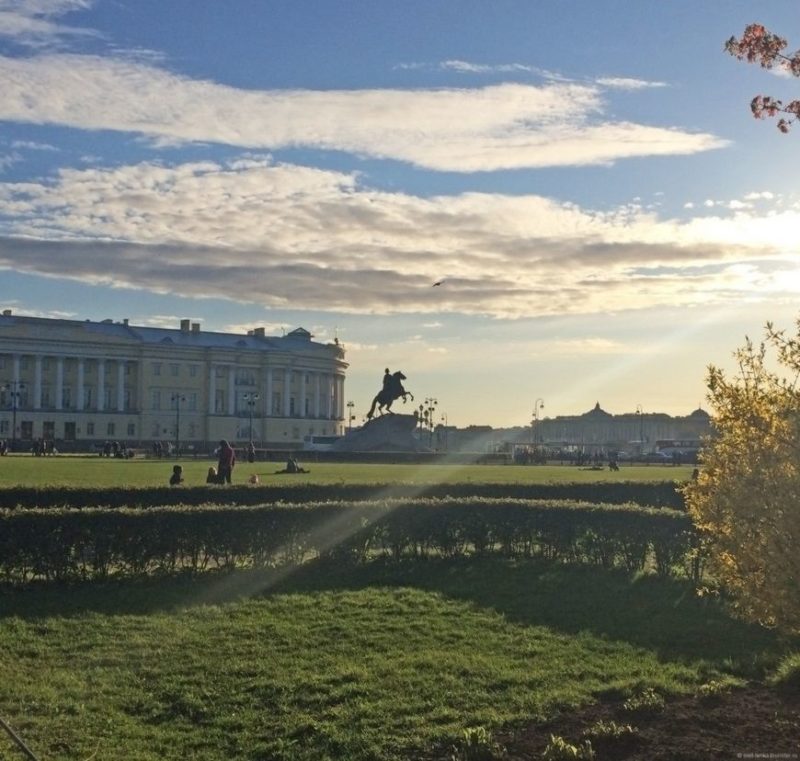Bronze Horseman in St. Petersburg
The Bronze Horseman in St. Petersburg - a monument dedicated to the Russian Tsar Peter I. The monument is one of the main symbols of the city.
Many people mistakenly believe that the monument is made of copper, but it is made of bronze. "Copper" it began to be called in the XVIII – XIX centuries, then in Russian bronze was called the word "copper."
History of creation
The Bronze Horseman model was created by the French sculptor Etienne Falcone, who was recommended to Catherine II by the philosopher Denis Diderot. Work on the statue took Falcone 2 years. The sculptor’s assistants were Fyodor Gordeyev, who fashioned a snake, and Falcone’s apprentice, Marie Ann Collot, who created the head of the statue. In 1773, professional architect Yury Velten was appointed to help the French master, who was in charge of general management.
The gypsum model was completed in the summer of 1769 and was awaiting casting. Falcone himself never did such work and therefore refused to cast the statue on his own. The first, not entirely successful, moulding place in 1775. In the process, the pipe burst and only thanks to the skill of the foundry Emelyan Khaylov managed to save the lower part of the sculpture. The upper part was finished during the second casting, after 2 years.
The solemn opening of the monument took place on August 7 (August 18), 1782 on Senatskaya Square of St. Petersburg. Falcone did not attend it, since he left Russia in 1778. Work on the completion of the project performed Yuri Felten. In 1976, the monument was restored, as it appeared cracks.
"Thunder-stone"
While there was work on the statue, a thunder-stone was delivered to St. Petersburg on which a monument was erected. Stone found near the village of Konnaya Lakhta. Currently, this place is Petrovsky pond, which was formed as a result of flooding the pit, after removing the stone.
Transportation and installation of the “thunder-stone” took almost 5 months, for these works we specially chose the winter time so that the earth did not fall under heavy load. A huge boulder was delivered to the Senatskaya Square on a ship on September 26 (October 7), 1770. After processing, "thunder-stone" significantly lost in volume.
Description of the monument "The Bronze Horseman"
The Bronze Horseman is the second equestrian monument dedicated to Peter I. The first of these, the work of sculptor Rastrelli, is located in front of the Mikhailovsky Castle on Klenovaya Street in St. Petersburg.
The concept of the Bronze Horseman was developed with the participation of Catherine II, the philosophers Diderot and Voltaire. The main idea of the monument was to convey the achievements of Peter I. development of the country. Falcone depicted the emperor in a simple fluttering dress, which according to the author reflects the heroism of Peter I. The king sits not in the saddle, but on a bear skin, which symbolizes a people civilized by the sovereign. A laurel wreath on the head and a sword on the belt indicate the victories of the emperor as a commander. Peter I sits on a rearing horse, with a snake wriggling under its feet, which symbolizes a successful struggle against external threats. In addition, the snake serves a more practical purpose, it ensures the stability of the monument, since the main weight of the sculpture falls on the hind legs of the horse.
On the pedestal there is an inscription “PETRU to the first EKATERINA Second Year 1782.”, thus Catherine II wanted to show the continuity of power.
Monument in culture
The most famous work, due to which the monument got its name, is the poem by A. S. Pushkin “The Bronze Horseman”. In the story, the protagonist of the work, the official Eugene, who lost his beloved as a result of the flood of 1824, comes to the monument to Peter I and scolds the tsar for creating Petersburg, the city that brought Yevgeny so many misfortunes. The Bronze Horseman comes to life and rushes in pursuit of the main character.
Sculpture is often attributed to mystical properties. Legends are known when a bronze statue appeared in dreams or pursued people. Authors of works of art often used this motif in their books.
It may also be interesting
- How to travel in Saint Petersburg without living your home
- Four of the ten best restaurants in the country are in St. Petersburg
- The first Holocaust museum in St. Petersburg
- A scientist from St. Petersburg created the biochronicle of Peter the Great.
- 10 interesting facts about Saint-Petersburg streets



